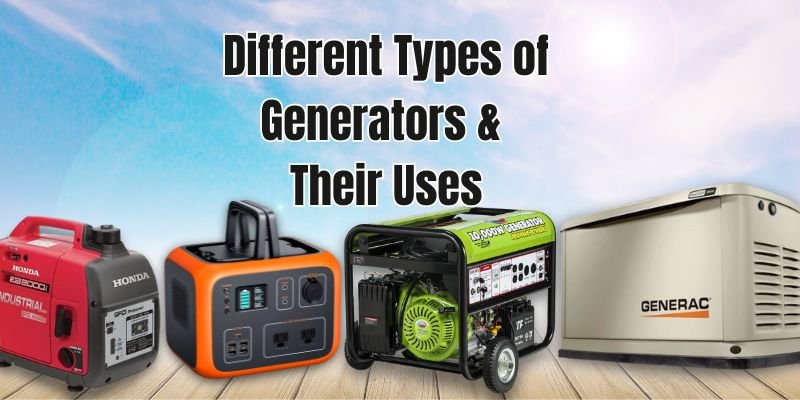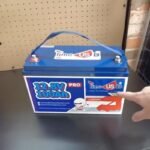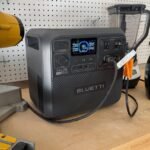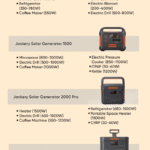Disclosure: This post contains affiliate links and I will be compensated if you make a purchase after clicking through my links. Learn More
Building a wheel kit for a generator is a straightforward task. You need basic tools and some spare time.
With the right steps, you can make your generator mobile and easy to move. Generators can be heavy and difficult to transport. Adding wheels makes it easier to move them around. This is useful during power outages or when you need to use your generator in different locations.
In this guide, we will walk you through the process of building a wheel kit for your generator. You will learn what tools and materials you need. You will also get step-by-step instructions to complete the task. By the end, your generator will be more convenient and user-friendly. Let’s get started!
Gathering Materials
Gather essential materials like bolts, wheels, and metal brackets. Ensure all items are compatible with your generator. Gather tools such as wrenches, drills, and measuring tape for assembly.
Gathering materials is a crucial first step in building a wheel kit for your generator. It can be a fun and straightforward process if you have a clear plan. Ensuring you have all the necessary tools and parts will save you time and prevent frustration.
Required Tools
Before you dive into assembling your wheel kit, gather all the tools you will need. A socket set is essential for tightening and loosening bolts. You might also need a wrench set for various sizes.
A measuring tape ensures precise alignment of parts. Having a power drill with different bits will make the assembly faster. Don’t forget safety gear like gloves and safety glasses.
Necessary Parts
Now, let’s talk about the parts you need. First, get a sturdy axle that fits your generator’s weight. You’ll also need at least two wheels—choose ones that are durable and can handle rough terrain.
Bolts and nuts are essential for securing the wheels to the axle. You might also need washers to ensure a tight fit. A handle kit is useful for easy maneuvering of the generator.
When I built my first wheel kit, I overlooked the importance of having lock nuts. Regular nuts kept loosening over time. Lock nuts saved me from constantly retightening the wheels.
Are you wondering if you can use spare parts from other projects? It’s possible, but make sure they match the size and strength required. This can save you money and reduce waste.
By gathering all the tools and parts in advance, you ensure a smoother assembly process. Have you ever started a project only to stop midway for a missing tool? Preparing ahead can make your DIY project more enjoyable and efficient.

Credit: www.lowes.com
Preparing The Generator
Preparing the generator is a crucial step in building a wheel kit for it. Proper preparation ensures the generator is safe and correctly positioned for the installation process. This section will guide you through essential safety precautions and how to position the generator effectively.
Safety Precautions
Before starting, make sure the generator is turned off. Disconnect any power sources to avoid accidents. Wear protective gloves and safety glasses. Clear the area around the generator. Ensure there are no flammable materials nearby. Read the generator’s manual for any specific safety instructions.
Positioning The Generator
Choose a flat surface to place the generator. Ensure the ground is stable and can support the generator’s weight. Position the generator away from walls and obstacles. This will give you enough space to work. Make sure the generator is easy to access from all sides. This will help during the wheel kit installation.
Assembling The Axle
Assembling the axle for your generator’s wheel kit is a crucial step to ensure that the wheels are securely attached and function properly. This process involves attaching brackets and securing the axle, making sure everything is aligned correctly. Let’s dive into the details of each part to make your assembly smooth and efficient.
Attaching The Brackets
Start by laying out all the parts you’ll need. You’ll typically have two brackets, an axle, and some bolts and nuts. Ensure you have the right tools, such as a wrench and screwdriver. This step is straightforward but requires attention to detail.
Position the brackets on either side of the generator. Make sure they are aligned with the pre-drilled holes. Having a friend help you hold the brackets can make this easier. Insert the bolts through the holes and tighten them securely.
Remember, a loose bracket can cause instability. Double-check that each bolt is snug and the brackets are firmly in place. This foundation is vital for the next steps.
Securing The Axle
With the brackets attached, it’s time to secure the axle. Slide the axle through the holes in the brackets. Ensure it’s centered and evenly distributed on both sides.
Once the axle is in place, attach the wheels. Typically, you’ll need to slide a washer onto the axle before placing the wheel. Follow this with another washer and then secure it with a nut. Tighten the nut using your wrench.
Check the wheels for wobbling. A secure axle should keep the wheels steady. If you notice any looseness, re-tighten the nuts and ensure everything is properly aligned.
Building a wheel kit for your generator can be a rewarding DIY project. Have you ever had a moment where the wheels saved your back from heavy lifting? Share your experiences in the comments below. Remember, a well-assembled axle ensures your generator is mobile and ready for any situation.
Mounting The Wheels
Mounting the wheels to your generator can make it easier to move around. This task requires some basic tools and attention to detail. Following the steps below will help you mount the wheels securely and efficiently.
Aligning The Wheels
First, place the generator on a flat surface. Check the wheel brackets for alignment. The wheels must be parallel to the ground. This will ensure smooth movement. Use a level tool to confirm evenness. Mark the spots where the wheels will go.
Fastening The Wheels
Next, attach the wheels to the marked spots. Use bolts and nuts to secure them. Tighten the bolts with a wrench. Ensure the wheels do not wobble. Test the stability by moving the generator slightly. If the wheels are loose, tighten the bolts further. Repeat the process for all wheels.
Installing The Handle
Adding a handle to your generator wheel kit makes it easy to move. This section will guide you through installing the handle step-by-step. Let’s get started.
Choosing The Handle Location
First, decide where to place the handle. Choose a spot that offers balance. It should be easy to lift and push the generator. Usually, the back of the generator works best.
Ensure the handle won’t block any controls. It should not interfere with other parts. Mark the chosen location with a pencil or marker.
Attaching The Handle
Now, it’s time to attach the handle. Align the handle with the marks you made earlier. Secure it with bolts and nuts. Tighten the bolts using a wrench.
Check the handle for sturdiness. Make sure it feels stable. If it moves, tighten the bolts more. Test the handle by lifting the generator slightly. It should feel firm and secure.
That’s it! You have successfully installed the handle. Your generator is now easier to move.
Testing The Wheel Kit
After building your wheel kit, testing it is essential. This ensures it works correctly and safely. Testing involves a few steps. Let’s focus on checking stability and ensuring mobility.
Checking Stability
First, check the stability of the wheel kit. Place the generator on a flat surface. Gently push it from different angles. Observe if it wobbles or tips. The wheel kit must hold the generator firmly. If it wobbles, tighten the bolts. Ensure the wheels are secure and properly attached. Stability is crucial for safety.
Ensuring Mobility
Next, test the mobility of the wheel kit. Push the generator to move it. It should roll smoothly without much effort. Check if the wheels turn easily. Make sure they do not get stuck. If the wheels are stiff, apply some lubricant. Test the brakes if your wheel kit has them. They should engage and disengage smoothly. Mobility makes it easier to move the generator around.
Maintenance Tips
Maintaining your generator wheel kit is crucial. Regular care ensures the kit lasts longer. It also ensures your generator remains mobile and ready for use. Below are some essential maintenance tips.
Regular Inspections
Inspect the wheel kit often. Check for signs of wear and tear. Look at the wheels, axles, and fasteners. Ensure everything is secure. Loose parts can cause accidents or damage. Replace any worn-out parts immediately.
Lubrication Advice
Lubrication keeps your wheel kit moving smoothly. Apply lubricant to the axles and moving parts. Use a suitable grease or oil. This prevents rust and reduces friction. Lubricate the wheels at least once a month.

Credit: www.youtube.com

Credit: www.diy.com
Frequently Asked Questions
How To Put Wheels On A Generator?
Attach mounting brackets to the generator base. Securely fix the wheels to the brackets. Ensure all bolts are tight.
How To Make A Bike Wheel Generator?
To make a bike wheel generator, attach a dynamo to the wheel hub. Connect the dynamo to a voltage regulator. Wire the regulator to a battery or device for power storage or use. Secure all components firmly for safe operation.
Is It Hard To Build A Generator?
Building a generator can be challenging for beginners. It requires technical skills, tools, and knowledge of electrical components.
How Do You Put Wheels On A Firman Generator?
Attach wheels to a Firman generator by securing the axle brackets to the frame. Slide wheels onto the axle. Insert pins to lock wheels. Ensure all components are tightly fastened.
Final Words
Building a wheel kit for a generator is straightforward with the right tools. Follow the steps carefully. Gather all necessary parts and equipment. Measure and mark holes accurately. Secure the wheels tightly for stability. Test the movement of the generator.
Ensure it rolls smoothly. This DIY project saves money and increases generator mobility. Now, you can transport your generator effortlessly. Enjoy the convenience of a portable generator. Happy building!








